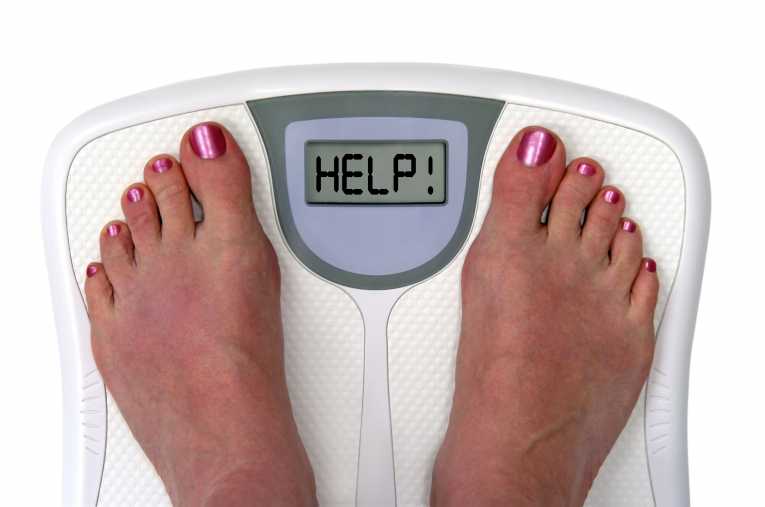 OSHAs “$afety Pays” program can help employers assess the impact of occupational injuries and illnesses on their profitability. This program uses a companys profit margin, the average costs of an injury or illness, and an indirect cost multiplier to project the amount of sales a company would need to cover those costs. The program is intended as a tool to raise awareness of how occupational injuries and illnesses can impact a companys profitability, not to provide a detailed analysis of a particular companys occupational injury and illness costs.
OSHAs “$afety Pays” program can help employers assess the impact of occupational injuries and illnesses on their profitability. This program uses a companys profit margin, the average costs of an injury or illness, and an indirect cost multiplier to project the amount of sales a company would need to cover those costs. The program is intended as a tool to raise awareness of how occupational injuries and illnesses can impact a companys profitability, not to provide a detailed analysis of a particular companys occupational injury and illness costs.
Category: Work Comp
Gravity Can Kill – Fall Protection Saves Lives
 The following tragic accident is an example of why it’s critical to wear fall protection.
The following tragic accident is an example of why it’s critical to wear fall protection.
A worker hanging cable was suspended about 18 feet in the air in the bucket of the truck, working with a a steel cable that was attached to utility poles on both sides of Central Avenue Pike. The cable was stretched across the roadway.
A pickup truck drove over the cable, and the cable hooked on the rear bumper, causing the cable to stretch tight before breaking free. The worker was hit by the cable and thrown from the bucket of the truck, then fell to the ground.
via Report: Worker hanging cable died after falling 18 feet to the ground | wbir.com.
10 Most Dangerous Jobs in America
 Before you complain about punching the time clock, read this list for some perspective. Maybe the coffee stinks and you don’t like your boss, but at least the threat of death or injury isn’t perpetually hanging over your head. The order may change from year to year, but these are typically the most dangerous jobs in America.
Before you complain about punching the time clock, read this list for some perspective. Maybe the coffee stinks and you don’t like your boss, but at least the threat of death or injury isn’t perpetually hanging over your head. The order may change from year to year, but these are typically the most dangerous jobs in America.
1. Logger
2. Pilot
3. Fisher
4. Iron/Steel Worker
5. Garbage Collector
6. Farmer/Rancher
7. Roofer
8. Electrical Power Installer/Repairer
9. Sales, Delivery, and Other Truck Driver
10. Taxi Driver/Chauffeur
Liquid Candy: How Sugary Drinks Are Harming America’s Health
 More than two-thirds of Americans are overweight or obese and the increased consumption of sugary drinks is a big part of why this is happening.
More than two-thirds of Americans are overweight or obese and the increased consumption of sugary drinks is a big part of why this is happening.
Americans consume gargantuan quantities of carbonated soft drinks and suffer untoward health consequences. Companies annually produce enough soda pop to provide 557 12-ounce cans—52.4 gallons—to every man, woman, and child.
Carbonated soft drinks are the single biggest source of calories in the American diet, providing about 7 percent of calories; adding in noncarbonated drinks brings the figure to 9 percent. Teenagers get 13 percent of their calories from carbonated and noncarbonated soft drinks.
Soft drinks provide large amounts of sugars (mostly high-fructose corn syrup) to many individuals’ diets. Soda pop provides the average 12 to 19-year-old boy with about 15 teaspoons of refined sugars a day and the average girl with about 10 teaspoons a day. Those amounts roughly equal the government’s recommended limits for teens’ sugar consumption from all foods.
Soft drinks are a problem not only for what they contain, but for what they push out of the diet. In 1977–78, boys consumed more than twice as much milk as soft drinks, and girls consumed 50 percent more milk than soft drinks. By 1994–96, both boys and girls consumed twice as much soda pop as milk. Heavy soft drink consumption is associated with lower intake of numerous vitamins, minerals, and dietary fiber.
The empty calories of soft drinks are likely contributing to health problems, particularly overweight and obesity. Those conditions have become far more prevalent during the period in which soft drink consumption has soared. Several scientific studies have provided experimental evidence that soft drinks are directly related to weight gain. That weight gain, in turn, is a prime risk factor for type 2 diabetes, which, for the first time, is becoming a problem for teens as well as adults. As people get older, excess weight also contributes to heart attacks, strokes, and cancer.
via Liquid Candy: How Sugary Drinks Are Harming America’s Health ~ CSPI.
Warning – Confined Space
 Confined Spaces can be dangerous.
Confined Spaces can be dangerous.
“Confined Space” refers to a space which by design has limited openings for entry and exit, unfavorable natural ventilation which could contain or produce dangerous air contaminants, and which is not intended for continuous employee occupancy. Confined spaces include but are not limited to storage tanks, compartments of ships, process vessels, pits, silos, vats, degreasers, reaction vessels, boilers, ventilation and exhaust ducts, sewers, tunnels, underground utility vaults, and pipelines. According to data collected by the U.S. Department of Labor USDOL, Bureau of Labor Statistics BLS Census of Fatal Occupational Injuries CFOI program, fatal injuries in confined spaces fluctuated from a low of 81 in 1998 to a high of 100 in 2000 during the five-year period, averaging 92 fatalities per year.
via CDC – Confined Spaces – NIOSH Workplace Safety and Health Topic.
The Five Steps of Risk Management Leads To Lower Cost
 There are five steps to risk management:
There are five steps to risk management:
- Identify
- Analyze
- Control
- Finance
- Measure
The most important step is “Identify” because you can’t Analyze, Control, Finance or Measure what you don’t know. Insurance is “NOT” risk management. Insurance is “FINANCING” risk. Managing risk 365 days a year vs. buying insurance 1 day a year is the key to lowering the total cost of risk (TCOR) for business.
Older Workers To Outnumber Younger Employees For The First Time
 Whether out of economic need or simply a desire to continue working, many baby boomers aren’t leaving their jobs anytime soon.
Whether out of economic need or simply a desire to continue working, many baby boomers aren’t leaving their jobs anytime soon.
In fact, many workers 55 and older are staying in the workforce. By year’s end their numbers will surpass those who are aged 25 to 34. And the trend is expected to continue for the foreseeable future — until 2020.
via Older Workers To Outnumber Younger Employees For The First Time.
Stop the Strain at Work
 Overexertion has long been among the leading causes of nonfatal workplace injuries, and attempts to combat it continue to be a burden on employers and their pocketbooks. An estimated 3.5 million overexertion injuries occur every year, most of which are from excessive lifting, lowering, pushing, pulling or carrying. Back injuries are the most common form of overexertion in the workplace and can result in huge costs. According to a 2010 report from the Boston-based Liberty Mutual Research Institute for Safety, in 2008, overexertion cost businesses $13.4 billion in direct workers’ compensation costs – accounting for more than 25 percent of the overall $53.4 billion national burden.
Overexertion has long been among the leading causes of nonfatal workplace injuries, and attempts to combat it continue to be a burden on employers and their pocketbooks. An estimated 3.5 million overexertion injuries occur every year, most of which are from excessive lifting, lowering, pushing, pulling or carrying. Back injuries are the most common form of overexertion in the workplace and can result in huge costs. According to a 2010 report from the Boston-based Liberty Mutual Research Institute for Safety, in 2008, overexertion cost businesses $13.4 billion in direct workers’ compensation costs – accounting for more than 25 percent of the overall $53.4 billion national burden.
via 6 11 Stop the Strain.
How can you lose weight and keep it off for good?
 How can you lose weight and keep it off for good? Successful dieters in the National Weight Control Registry, a group of 10,000 people who have lost 30 pounds or more and maintained that loss for a year or more, have developed many weight-control strategies. For instance, they:
How can you lose weight and keep it off for good? Successful dieters in the National Weight Control Registry, a group of 10,000 people who have lost 30 pounds or more and maintained that loss for a year or more, have developed many weight-control strategies. For instance, they:
- Follow a low-calorie, low-fat diet of about 1,800 calories a day.
- Keep track of food intake.
- Count calories, carbs or fat grams or use a commercial weight-loss program to track food intake.
- Walk about an hour a day or burn the same calories doing other physical activities.
- Eat breakfast regularly, often including whole grains and low-fat dairy products.
- Limit dining out to an average of three times a week, and fast food to less than once a week.
- Eat similar foods often and dont splurge much.
- Watch fewer than 10 hours of TV a week.
- Weigh themselves at least once a week.
via Obesity could affect 42% of Americans by 2030 – USATODAY.com.
Buckle Up – Even in the Back Seat
 Unbuckled occupants “become a back-seat bullet” in a crash, says Pam Fischer, state highway traffic safety director. In collisions, experts say, unbelted passengers in the back seat continue to move at the same rate of speed as the vehicle they’re in until they hit something — seat back, dashboard, windshield or people in the front seat. Yet many view the back seat as somehow safer.
Unbuckled occupants “become a back-seat bullet” in a crash, says Pam Fischer, state highway traffic safety director. In collisions, experts say, unbelted passengers in the back seat continue to move at the same rate of speed as the vehicle they’re in until they hit something — seat back, dashboard, windshield or people in the front seat. Yet many view the back seat as somehow safer.
via States expand seat belt laws to cover rear-seat riders – USATODAY.com.
